Those stain-resistant khakis you just picked up at the mall, the tennis ball that holds its bounce longer and sunscreen that's clear instead of white have something in common -- nanotechnology.
Scientists manipulating matter at the molecular level have improved on hundreds of everyday products in recent years and are promising dramatic breakthroughs in medicine and other industries as billions of dollars a year are pumped into the nascent sector.
But relatively little is known about the potential health and environmental effects of the tiny particles -- just atoms wide and small enough to easily penetrate cells in lungs, brains and other organs.
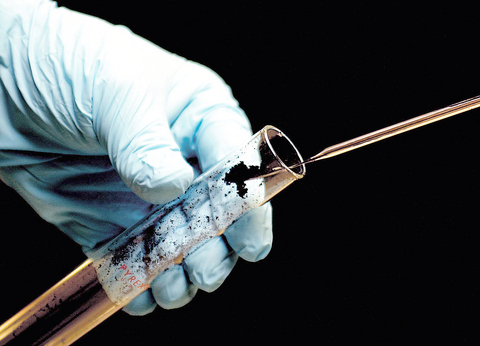
PHOTO: NY TIMES NEWS SERVICE
While governments and businesses have begun pumping millions of dollars into researching such effects, scientists and others say nowhere near enough is being spent to determine whether nanomaterials pose a danger to human health.
Michael Crichton's bestselling book Prey paints a doomsday scenario in which a swarm of tiny nanomachines escapes the lab and threatens to overwhelm humanity. Scientists believe the potential threat from nanomaterials is more everyday than a sci-fi thriller, but no less serious.
Studies have shown that some of the most promising carbon nanoparticles -- including long, hollow nanotubes and sphere-shaped buckyballs -- can be toxic to animal cells. There are fears that exposure can cause breathing problems, as occurs with some other ultrafine particles, that nanoparticles could be inhaled through the nose, wreaking unknown havoc on brain cells, or that nanotubes placed on the skin could damage DNA.
The US National Institute for Occupational Safety and Health is developing guidelines for working with nanomaterials, saying the tiny particles may raise health concerns and the risk to those who work with them is unknown.
Also unknown is the risk to consumers and the environment.
"No one knows, and that's the problem," said Pat Roy Mooney, executive director of the ETC Group, an Ottawa-based nonprofit that studies the impact of technology on people and the environment. "People are rubbing them on our skin as sunscreens and as cosmetics."
Mooney's group is calling for products, such as sunscreen, that are directly absorbed into the body to be taken off the shelf until there is more study.
"Frankly, I don't think that skin creams or stain resistant pants or food additives are a good reason to sacrifice someone's health," he said.
The federal government currently spends about US$1 billion a year on nanotechnology research under its National Nanotechnology Initiative.
A newly released inventory by the Project on Emerging Nanotechnologies found about US$6 million being spent annually by the federal government on research that is highly focused on health and environmental effects of nanotechnology. Though the inventory is not a complete accounting of all research, it indicates that a small percentage of research dollars are going to health and safety, said Dave Rejeski, director of the non-partisan policy group.
"More energy and more funding needs to go into it," said Kevin Ausman, executive director of the Center for Biological and Environmental Nanotechnology at Rice University in Texas.
"There is not going to be a simple answer to the question `Is nanotechnology dangerous?'" he said.
But Ausman and others said the nanotechnology sector is ahead of the curve when it comes to understanding potential dangers, and is doing far more early research than has been done in other industries, even one as relatively new as biotechnology.
"These issues are being discussed openly," said Agnes Kane, a pathologist at Brown University, who is moving into nanotechnology after extensive work researching asbestos. She is one of several Brown professors sharing a US$1.8 million, four-year grant to study the effects of nanoparticles on human and animal cells.
The asbestos industry, which doled out staggering sums of money for liability lawsuits after material used for insulation was shown to cause cancer and other ailments, paid the price for a failure to fully understand the product's dangers before putting it on the market, Kane said.
"This is one of the few areas that I've been in that there has been a discussion at the beginning," she said.
Rejeski said researchers are struggling with how much to spend and how to decide what research to fund. The group's inventory of research is a kind of "nanotech dating service" that can help match up researchers with similar interests who are looking for partners, he said.
It can also identify holes and point to areas that need more funding. For example, a search of the inventory shows much of the research now happening is focused on the lungs. Very little is focused on the gastrointestinal tract -- even though there are new toothpastes being developed that use nanotechnology, Rejeski said.
There's also very little so-called lifecycle research -- how nanomaterials break down in the environment, Rejeski said.
Scientists are also working on creating a standard terminology for nanotechnology so that researchers from different backgrounds can work together and better understand the research that's been done in other fields.
The NanoBusiness Alliance, a group of large and small businesses, is looking at working with other groups to conduct an economic analysis of the level of funding that is needed for environmental health and safety research in the coming year. The alliance consists primarily of nanotech startups but also includes major corporations such as Lockheed Martin and Motorola and research institutions including Northwestern and Purdue universities.
Sean Murdock, executive director of the group, said he believes it's premature to regulate the young industry but that businesses recognize that more health and safety research is needed.
"If we keep our eye on the ball," he said, "we can avoid big downstream problems."
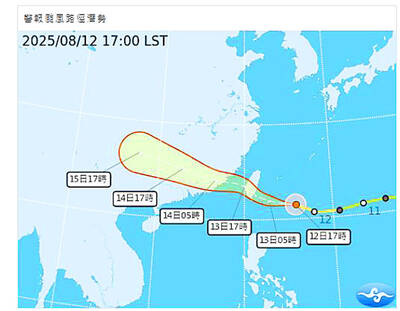
GET TO SAFETY: Authorities were scrambling to evacuate nearly 700 people in Hualien County to prepare for overflow from a natural dam formed by a previous typhoon Typhoon Podul yesterday intensified and accelerated as it neared Taiwan, with the impact expected to be felt overnight, the Central Weather Administration (CWA) said, while the Directorate-General of Personnel Administration announced that schools and government offices in most areas of southern and eastern Taiwan would be closed today. The affected regions are Tainan, Kaohsiung and Chiayi City, and Yunlin, Chiayi, Pingtung, Hualien and Taitung counties, as well as the outlying Penghu County. As of 10pm last night, the storm was about 370km east-southeast of Taitung County, moving west-northwest at 27kph, CWA data showed. With a radius of 120km, Podul is carrying maximum sustained
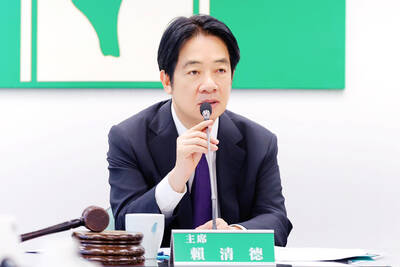
President William Lai (賴清德) yesterday criticized the nuclear energy referendum scheduled for Saturday next week, saying that holding the plebiscite before the government can conduct safety evaluations is a denial of the public’s right to make informed decisions. Lai, who is also the chairman of the Democratic Progressive Party (DPP), made the comments at the party’s Central Standing Committee meeting at its headquarters in Taipei. ‘NO’ “I will go to the ballot box on Saturday next week to cast a ‘no’ vote, as we all should do,” he said as he called on the public to reject the proposition to reactivate the decommissioned
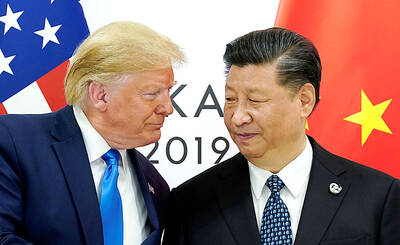
US President Donald Trump on Friday said that Chinese President Xi Jinping (習近平) told him China would not invade Taiwan while Trump is in office. Trump made the remarks in an interview with Fox News, ahead of talks with Russian President Vladimir Putin over Moscow’s invasion of Ukraine. “I will tell you, you know, you have a very similar thing with President Xi of China and Taiwan, but I don’t believe there’s any way it’s going to happen as long as I’m here. We’ll see,” Trump said during an interview on Fox News’ Special Report. “He told me: ‘I will never do
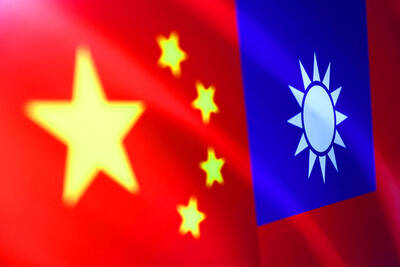
EXCEPTIONS: Some people could be allowed to reclaim citizenship for humanitarian reasons or because of their contributions to the nation, the interior ministry said Taiwan would soon unveil new rules banning Taiwanese residents of China from reclaiming their citizenship if they participated in Beijing’s propaganda activities, the Ministry of the Interior said on Monday. The measures were drafted following President William Lai’s (賴清德) March 13 directive that the government counter China’s espionage and influence campaigns aimed at undermining Taiwan’s sovereignty, the ministry said in a preview of the rules. The changes would affect Taiwanese who lost their citizenship after becoming permanent residents of China or obtaining passports issued by China, it said. Under the measures, former Taiwanese nationals living in China who had made statements denying the